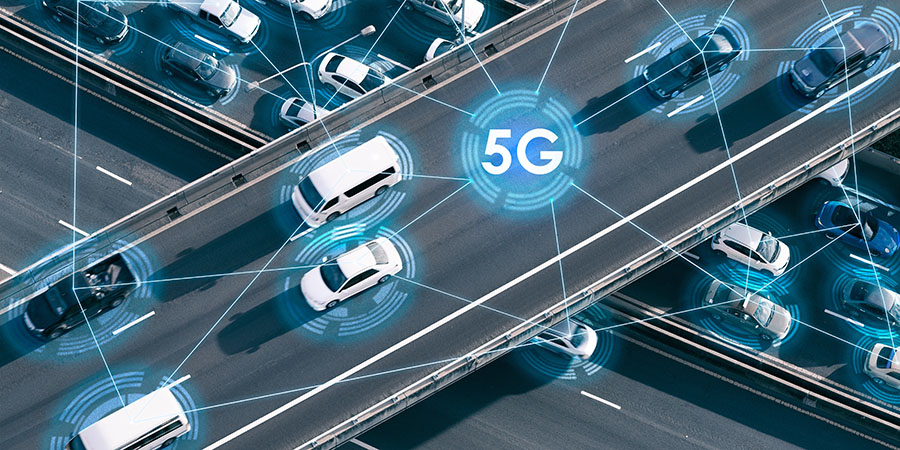One of the most significant impacts of the convergence of generative AI (GenAI) and 5G is the enhancement of network efficiency and performance.
5G networks are designed to handle vast amounts of data with minimal delays, but managing this data requires intelligent systems that can optimize network resources dynamically.
Generative AI plays a role in this context by analyzing network traffic patterns, predicting potential bottlenecks, and suggesting optimal configurations to maintain seamless connectivity.
Telecom Review Asia Analysis: Asia Pacific's Path to USD 26 Billion in Generative AI Expenditure by 2027
AI and 5G Spectrum Allocation
A critical challenge in the deployment of 5G networks is the efficient allocation of radio spectrum. Traditionally, radio spectrum has been divided into frequency bands allocated to various commercial and government agencies, often leading to underutilization. AI presents a solution to this problem by optimizing spectrum allocation and management.
By leveraging AI algorithms, communication equipment can dynamically discover and utilize available frequencies, rather than being confined to a fixed spectrum. This transition from a static, manually-controlled system to an AI-driven approach allows for more efficient use of the spectrum, reducing the risk of overcrowded airwaves.
Additionally, AI plays a significant role in spectrum allocation by managing usage and avoiding interference, even in challenging environments. It adapts system capacity between 4G and 5G based on actual traffic demands, ensuring optimal network performance. Additionally, AI's efficient deployment capabilities help accelerate the rollout of 5G applications, enabling faster returns on investment.
The combination of AI and 5G also enhances data analytics by enabling the correlation of varied data sets across multiple dimensions such as space, time, context, and state. This multidimensional analysis allows AI to uncover hidden patterns, dependencies, and causal relationships within the data, leading to more focused and prioritized actions.
Related: TRAI Pushes for Open Infrastructure and Spectrum Sharing Among Telcos
Empowering Smart Cities and IoT
The development of smart cities and the Internet of Things (IoT) is heavily dependent on the seamless integration of AI and 5G technologies. Smart cities rely on a network of connected devices and sensors to collect and analyze data, enabling the efficient management of urban infrastructure and services. Generative AI can process this data to optimize city operations, such as traffic management, energy consumption, and public safety.
For instance, generative AI can analyze traffic patterns to predict congestion and suggest alternative routes for drivers. With 5G’s low latency, this information can be communicated to autonomous vehicles in real time, enabling them to make informed decisions on the road. This not only improves traffic flow but also reduces the risk of accidents, contributing to safer and more efficient urban environments.
For example, Didi Chuxing, the world’s largest mobile transportation platform, partnered with Chinese traffic management authorities to launch the "Smart Transportation Brain," an integrated solution for smart city traffic management. This system leverages the speed and low latency of 5G to analyze traffic data in real-time, optimizing traffic flow and reducing congestion.
Similarly, ZTE assisted with the first 5G local traffic offloading pilot in China’s mining industry. By utilizing 5G's capabilities, traffic data from various sensors and vehicles was processed on-site, enabling faster decision-making and improving overall traffic management efficiency within the mining sector.
In the context of IoT, generative AI can be used to create intelligent systems that adapt to changing conditions and user needs. For example, smart homes equipped with AI-powered devices can learn the preferences and habits of their occupants, adjusting lighting, temperature, and security settings accordingly. Utilizing 5G, these devices can communicate with each other instantly, ensuring a seamless and responsive living environment. This level of connectivity and intelligence has the potential to revolutionize the way we interact with our surroundings, making everyday life more convenient and efficient.
Huawei's past collaboration with I-City to develop intelligent homes is a prime example. This partnership leveraged 5G's high-speed connectivity and low latency to create homes that were not only connected but also capable of learning and adapting to residents' needs in real-time.
In another groundbreaking development, in 2023, Huawei and du unveiled the world's first 5.5G Villa, showcasing the next evolution in smart home technology. This villa utilizes the enhanced capabilities of 5.5G to provide even faster connectivity and more advanced smart home features, from AI-powered home automation to ultra-reliable security systems.
Also Read: Juniper Research Predicts 150% Surge in IoT-Connected Satellites by 2029
The Pioneer of 5G and AI Integration
Singapore has emerged as a global leader in integrating 5G technology with AI-driven applications. The city-state's commitment to leveraging advanced technologies is evident in its innovative use of 5G-enabled drones, which have transitioned from theoretical concepts to practical applications.
For example, M1’s deployment of drones to deliver medical supplies from shore to ships showcases how 5G’s high-speed and low-latency capabilities are crucial in managing complex logistics operations. These drones dynamically adjust their flight paths based on real-time environmental data, traffic updates, and immediate logistical needs, ensuring timely and secure deliveries. Additionally, in surveillance operations, these drones utilize AI to autonomously monitor and analyze high-definition video feeds, identifying unauthorized entries or suspicious activities and alerting security personnel without human intervention.
Singtel's successful trial of the first 5G RedCap for IoT devices marks a significant milestone in Singapore's journey toward a more connected future. This advancement allows for more efficient and widespread use of IoT devices, enabling smarter infrastructure and more responsive urban systems. Combined with the low latency and high-speed capabilities of 5G, this development promises to enhance everything from industrial automation to smart city solutions.
In addition, Singapore's National Multimodal LLM (large language model) Program for AI innovation highlights the country's commitment to leading in AI technology.
M1's provision of 5G Standalone (SA) connectivity and edge computing for the Singapore National Heritage Board’s museums is another example of how 5G is being harnessed to create more interactive and immersive cultural experiences.
Huawei’s decade-long "Seeds for the Future" initiative also plays a crucial role in cultivating tech talent in Singapore, ensuring that the next generation of innovators is well-equipped to lead in the integration of AI and 5G technologies.
This integration of AI with 5G not only enhances operational efficiency but also sets a precedent for other cities in the region.
Related: 35 Cities and Regions Unite to Launch a New Era of 5G-A Connectivity
Harnessing AI and 5G for Infrastructure Development
ASEAN's rapidly evolving AI and 5G infrastructure is being significantly bolstered by strategic investments and collaborations, positioning the region as a leader in digital transformation.
India is at the forefront of leveraging AI and 5G to address critical infrastructure challenges, particularly in traffic management and road safety. The National Highways Authority of India (NHAI) has introduced a new policy aimed at improving road safety and reducing response times to incidents on the country’s highways and expressways.
This policy utilizes cutting-edge AI technology and emphasizes the digital enforcement of traffic laws through systems like the Video Incident Detection and Enforcement System (VIDES). While the initial communication infrastructure relies on optical fiber cables (OFC), the policy anticipates the future integration of 5G-based communication tools as 5G coverage expands across the nation.
China's debut of the first 6G test network, built on existing 4G infrastructure, highlights the potential for ASEAN countries to leverage current networks while preparing for next-generation technology.
SK Telecom’s USD 200 million investment in SMART Global to enhance AI and data centers underscores the importance of robust infrastructure to support AI-driven applications.
In Malaysia, Microsoft’s investment in cloud and AI transformation is accelerating the country’s digital economy by providing advanced tools and platforms for businesses and governments alike.
In the Philippines, PhilTower and MIDC's joint venture to expand 4G/5G wireless infrastructure is crucial for improving connectivity across the archipelago. This project will facilitate the deployment of AI and IoT applications, boosting productivity and innovation in various sectors.
Thailand’s AIS investment in the 700 MHz frequency band to expand digital infrastructure further supports the region’s 5G ambitions.
Finally, the strategic partnership between Telkom Indonesia and Indosat Ooredoo Hutchison to enhance internet infrastructure is key to supporting the region's growing digital economy. By improving connectivity and bandwidth, this partnership enables the broader adoption of AI and 5G technologies, driving innovation and economic development across ASEAN.
Read More: Exploring 5G Monetization Strategies in the Asia Pacific






